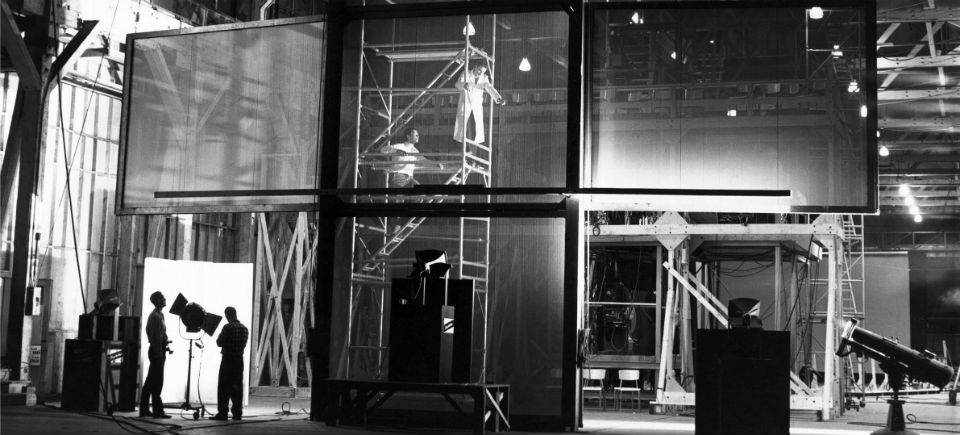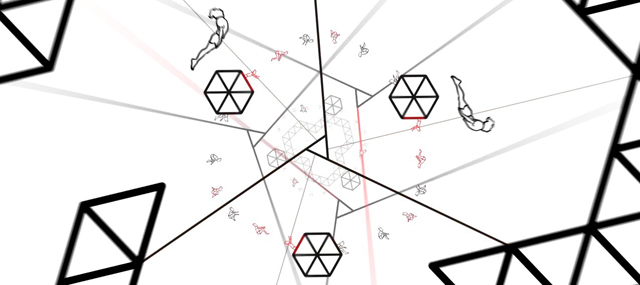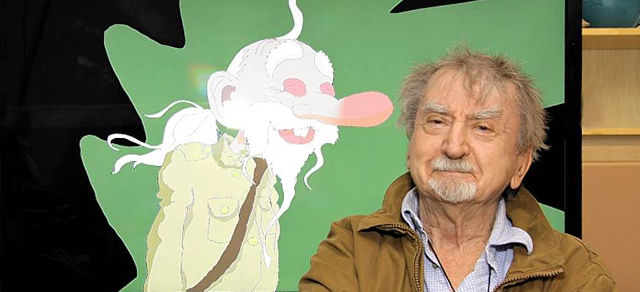Making Music: An inside look into one of the NFB’s training programs
Making Music is one of the NFB’s training initiatives designed to provide filmmakers with the opportunity to work collaboratively with musicians to produce a 5 minute experimental music film. Previous films that came out of this program can be seen here.
This year, filmmaker Claire Blanchet was paired with musician Sam Vipond to produce The Wobble Incident. The Wobble Incident is an erratic journey through layers of cinematic illusion. When the First Sound rings out in a silent cartoon world, two characters experience momentous change as their universe goes bananas.
The Wobble Incident by Claire Blanchet & by Sam Vipond, National Film Board of Canada
What sets their film apart from other efforts is that it’s an animated 3D film instead of a live-action short. This presented a unique set of challenges, over and above being novice filmmakers working in a new environment.
To elaborate on the process, and offer a peek inside one of our training programs, Claire and Sam kindly agreed to blog about their experience. This is Part 1 of their post:
Making The Wobble Incident wasn’t easy, but it did go pretty smoothly, all things considered. One thing that remained constant was that it was always really fun. Obviously, things got crazy and hectic sometimes, but I suspect that just comes with the territory.
Making Music was all about learning and discovery. And being the only group in the program doing animation had its own set of challenges. For example, during the pre-production/development phase we worked together all the time. We were side by side making each decision as a team, and we were awesome.
But when it came time to do the rough cut, things got a little crazy. The sheer number of hours it takes to bang out animation is astounding. Having a musician working alongside an animator during that time was akin to a jet plane traveling alongside a paddleboat.
We cannot stress enough how time consuming animation can be. You don’t have the freedom to change your mind about something 1000 times, because every little thing takes about a million years to make in the first place. Whereas in theory, a 5 minute piece of music can be created in 5 minutes.
For about the first half of the project, the main challenge for us was to figure out what we were going to do. That came about from many (many) intensive story meetings and beer-drinking brainstorming sessions. Once we had our stuff all planned out, we just had to actually make it. Things changed several times as we would try something out and it wouldn’t work, or it wouldn’t fit, so in a way the figuring-out-what-to-do phase went on for a long time.
More interesting challenges also came through the 2D/3D planning materials. We would make sketches and storyboards and production artwork and feel pretty happy with it. Then, we would be like, “Ok, so how long should this scene be? How long should this shot be?”
It was a pretty harsh awakening when we finally understood the timing aspect. We just kept thinking we would work to Sam’s sound and we let ourselves get totally preoccupied and obsessed with the making-of pieces.
We had some pencil drawn work destined for After Effects 3D, the bulk of the film was going to be done in SANDDE 3D, and we were super excited to experiment with scratch animation in 3D. For the final version of the film, we ended up cutting everything that wasn’t done in SANDDE, but when we put all of these pieces together during our experimentation, we realized we had a WHOLE lot of work to do!
And figuring out timing in 3D is pretty tricky until you actually watch it/feel it play back in stereo.
The 3D animation process, in our collaborative approach, presented unique challenges for our workflow. Ideally, we wanted to be in total collaboration mode at all times, passing pieces back and forth, “Here’s 30 seconds of sound, now make 30 seconds of animation.”
We figured by passing it back and forth we could tweak the sound and make gradual improvements. In the end, we ended up talking about the scenes to figure them out. So, we’d have an idea, imagine what it would look like, create some sound and then complete the animation.
I guess that was one way our process was kind of unique. The usual procedure for animated films (so we’re told) is to make the picture first, then write music to go with it. In our case, first we imagined the picture, then made the sound, and then created the images.
***
Part 2 of Claire and Sam’s blog post about Making Music will be published on Friday, September 25. In it, they will talk about the inspiration for their film and creating 3D images with SANDDE.



that was Sam’s calculation:) this was his first time working with animation, and my first time trying to keep up with a brilliant electro-acoutistic-laptoptician!
A million years, Claire? Really?